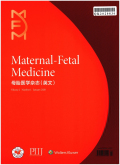- 钛学术文献服务平台 \
- 学术期刊 \
- 医药卫生期刊 \
- 妇产科学与儿科学期刊 \
- 母胎医学杂志(英文)期刊 \
Management of Preeclampsia in Low- and Middle-Income Countries: Lessons to Date, and Questions Arising, from the PRE-EMPT and Related Initiatives
Management of Preeclampsia in Low- and Middle-Income Countries: Lessons to Date, and Questions Arising, from the PRE-EMPT and Related Initiatives
基本信息来源于合作网站,原文需代理用户跳转至来源网站获取
摘要:
Preeclampsia remains associated with an increased risk of maternal and perinatal morbidity and mortality, and the burden of that excess risk is largely borne by pregnant women and their families in low- and middle-income countries (LMICs). Therefore, the Bill & Melinda Gates Foundation funded the PREeclampsia - Eclampsia Monitoring, Prevention, and Treatment (PRE-EMPT) initiative to accelerate progress. From PRE-EMPT, and related activity, have come a number of impactful findings. First, there is increasing global support for broadening the definition of preeclampsia to include women with hypertension and either significant proteinuria or evidence of target organ damage or fetoplacental compromise (including evidence angiogenic imbalance). Second, using blood pressure (BP) data from the Community-Level Interventions for Preeclampsia trials in India, Mozambique, and Pakistan, acquired on validated-for-pregnancy, semi-automated, low-cost BP devices, there are now population-level, rather than facility-based, estimates for the burden of pregnancy hypertension (sub-categorized into preeclampsia (4%-6%), gestational hypertension (7%-12%), and chronic hypertension (0.3%-0.6%)). Third, there is an identified need to understand biological pathways that underlie the causation of preeclampsia in LMICs. Fourth, the Community-Level Interventions for Preeclampsia trials have shown that providing at least eight antenatal contacts, in this case using digital health-supported community health workers, cost-effectively reduces the burden of maternal (by 60%), fetal (60%), and neonatal (40%) mortality. Fifth, what is the utility and cost-effectiveness of routine proteinuria screening of normotensive pregnant women? Sixth, clinical risk factor-based prediction of preeclampsia remains most relevant for most women in LMICs; calcium replacement (≥1 g/day) and low-dose aspirin (100-175 mg/day) are the most useful directly preventative interventions. However, achieving sustainable development goals (SDGs) not directly related to health are more likely to reduce the global burden of preeclampsia and its consequences. Seventh, should a woman develop preeclampsia, personalized maternal time-of-disease risk estimates are available through the PIERS (Preeclampsia Integrated Estimate of RiSk) models, either with (fullPIERS) or without (miniPIERS) access to laboratory testing. Assessment of perinatal risks in LMICs is largely driven by gestational age; however, evidence of significant angiogenic imbalance may identify risk of intrauterine fetal death. Eighth, Control of Hypertension in Pregnancy Study trial data show that women with non-severe pregnancy hypertension (systolic BP 140-159 mmHg or diastolic BP (dBP) 90-109 mmHg) should receive an antihypertensive medication for a target dBP of 85 mmHg. Ninth, for women with severe pregnancy hypertension (systolic BP ≥160 mmHg or dBP ≥110 mmHg), oral antihypertensive management with either nifedipine, labetalol, or, less so, methyldopa will lower BP into the non-severe hypertension range. Tenth, magnesium sulfate remains the sole agent of choice for preventing and treating eclamptic seizures. Eleventh, corticosteroids should be administered to women at risk of delivery <35
+0 weeks’ gestation. Twelfth, although delivery of the placenta initiates resolution of the maternal syndrome of preeclampsia, decisions to initiate delivery should be guided by gestational age and maternal and fetal status. Many women will experience significant postpartum deterioration; delivery should not be equated with "cure" . Thirteenth, whether the development of preeclampsia identifies women at increased risk for early-onset cardiovascular disease in LMICs must be determined.

推荐文章
Study on Late Cretaceous-Cenozoic exhumation of the Yanji area, NE China: insights from low-temperat
Low-temperature thermochronology
Exhumation
Pacific Plate subduction
Yanji area
Late Cretaceous-Cenozoic
Geochemical constraints on the origin and tectonic setting of the serpentinized peridotites from the
Serpentinites
Mantle peridotites
Melt/rock interaction
Paleoproterozoic suture zone
Eseka area
Nyong series
Congo/São Francisco cratons
Lithium elemental and isotopic disequilibrium in minerals from peridotite xenoliths from Shangzhi, N
Mantle peridotite
Li isotope
Mantle metasomatism
Northeastern China
内容分析
关键词云
关键词热度
相关文献总数
(/次)
(/年)
文献信息
| 篇名 | Management of Preeclampsia in Low- and Middle-Income Countries: Lessons to Date, and Questions Arising, from the PRE-EMPT and Related Initiatives | ||
| 来源期刊 | 母胎医学杂志(英文) | 学科 | |
| 关键词 | Pre-eclampsia Global health Low- and middle-income countries | ||
| 年,卷(期) | 2021,(2) | 所属期刊栏目 | Review |
| 研究方向 | 页码范围 | 136-150 | |
| 页数 | 15页 | 分类号 | |
| 字数 | 语种 | 中文 | |
| DOI | 10.1097/FM9.0000000000000096 | ||
五维指标
引文网络
引文网络
二级参考文献 (0)
共引文献 (0)
参考文献 (0)
节点文献
引证文献 (0)
同被引文献 (0)
二级引证文献 (0)
2021(0)
- 参考文献(0)
- 二级参考文献(0)
- 引证文献(0)
- 二级引证文献(0)
研究主题发展历程
节点文献
Pre-eclampsia
Global health
Low- and middle-income countries
研究起点
研究来源
研究分支
研究去脉
引文网络交叉学科
相关学者/机构
期刊影响力
母胎医学杂志(英文)
主办单位:
中华医学会
出版周期:
季刊
ISSN:
2096-6954
CN:
10-1632/R
开本:
16开
出版地:
北京西城区东河沿街69号303室
邮发代号:
创刊时间:
2019
语种:
chi
出版文献量(篇)
122
总下载数(次)
0
总被引数(次)
2
期刊文献
相关文献
推荐文献

 免费查重
免费查重










